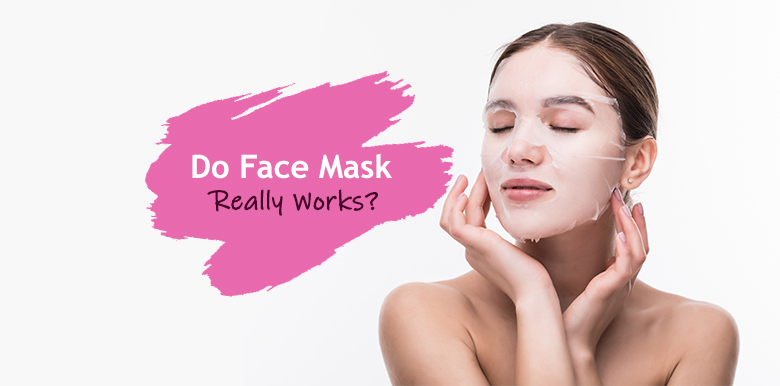From skin complaints, to teen sleepover activities, to alluring sparkly little packages – guys and gals of all ages are reaching for face masks. But are these beauty indulgences overpromising the dramatic skin results they claim?

Face mask
There’s nothing wrong with a basic skin care routine, especially if it’s working. But if you’re one of the millions of people plagued by skin conditions from acne to redness, you may be looking for a skin care boost. And unfortunately, professional skin care procedures, such as facials, can be pricey.
This is where face masks come in, offering intense skin treatment for a fraction of the cost.
The mask traps the moisture in the skin and creates film that helps to either hydrate, moisturize, dry or exfoliate the skin depending on the ingredients used and its purpose. Therefore, face masks allow ingredients to penetrate better into your skin in a short amount of time. Whether it’s salicylic acid for acne, vitamin C for fine lines or retinoid for brightening dark spots, a face mask can offer a more concentrated dose and more intense version of its ingredients compared to other forms of applications.
Your key ingredients often determine the type –
Now that you know which ingredients to pinpoint, you’ll want to narrow down the kind of face mask that’s best for you and your skin.
The list may be lengthy, but it’s easy to navigate. Why? Because certain ingredients and face-mask types go hand-in-hand.
Mud
Ideal for all skin types, mud masks are designed to give a deep cleanse.
Although these masks look similar to the clay variety, they’re water-based, which makes them more hydrating.
Different mud formulas contain different ingredients, but you’re likely to spot various acids and fruit extracts in the list.
Clay
Clay masks, which are rich in minerals, are great for revitalizing the skin.
The two main types of clay masks —kaolin and bentonite — absorb excess oil and are suitable for both oily and acne-prone skin.
Charcoal
There’s little evidence to support the use of charcoal face masks.
However, as activated charcoal can absorb toxinsTrusted Source inside the body, it’s thought that it can also remove dirt and other impurities from the surface of the skin.
Cream or gel
With added hyaluronic acid, thicker cream masks can be great for particularly dry skin that needs a healthy dose of hydration.
Gel formulas typically include cucumber and aloe vera to soothe and calm the skin, making them ideal for sensitive types.
Exfoliating
Chemical exfoliants, like glycolic acid and lactic acid, feature heavily in exfoliating face masks.
These mild acids work to remove dead cells built up on the surface of the face, leaving skin looking brighter and feeling smoother.
Enzyme
Fruit enzymes, such as those derived from pineapples and papayas, are another way to exfoliate.
Typically non-irritating, they also break down dead skin cells to tone and brighten skin.
Peel-off
With a rubber-like texture that’s super easy to remove, these masks are best for those who don’t like mess.
They can also be used for any skin concern. Some contain acids, such as glycolic and salicylic, that exfoliate and combat acne.
Others are full of hydrating hyaluronic acid or antioxidants like vitamins C and E.
Sheet
First popularized in Korea, most sheet masks contain moisturizing hyaluronic acid, ceramides, which help restore the skin’s barrier, and antioxidants, which defend against free radicals.
Serbon says they tend to be deeply hydrating and are great for:
- dry skin
- inflamed skin
- fine lines
Overnight
Overnight formulas, also known as sleep masks, pack an even more powerful hydrating punch.
Allowing ingredients like AHAs, turmeric, and shea butter to soak in for hours provides more time for them to produce benefits for the skin.
Natural
Household ingredients such as oats, honey, and turmeric can all feature in natural masks.
If you hadn’t guessed by now, these masks are ones you can conjure up at home using the wonders of the natural world.
